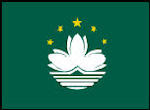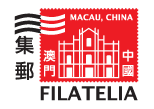As being the main body of the Charitable
Association, at the time of establishment, Kiang Wu Hospital dedicated their
efforts into helping the sick by using traditional Chinese medicine. At that
time, natural disasters frequently took place in the mainland, which brought
continuous misery upon the people in mainland China, so the directors of the Charitable
Association proactively made donation to relieve the people in disasters. ln
1893, Emperor Guangxu of the
Qing Dynasty granted the Association a plaque,
with “Built under the Emperor’s Order” as recognition of their contribution. In
1892, Mr. Sun Yat-sen went to Kiang Wu Hospital to undertake the post of
voluntary doctor of western medicine and opened up the vanguard of western
medicine. ln order to support Mr. Sun Yat-sen in connecting with the society by
making use of his medical skills to declare the thoughts of democratic
revolution, the Charitable Association offered great amount of funds for
subsidy. During the period of the Anti-Japanese War (1937-1945), Kiang Vu
Hospital directly supported the frontline, by providing medical treatment to
the wounded, relieving the refugees and acting as the chief of Macao Branch of
“War Bond Fundraising Committee” to actively raise funds for supporting the
Anti-Japanese War. After Hong Kong was occupied by the enemy, the Association
also helped to evacuate a lot of intellectualists and nationalists. Kiang Vu
Hospital has always been serving the comunity with the spirit of practicing
medicine to help, heal and rescue those in need. Since the foundation of New
China in 1949, it has been constantly walking towards modernization.
After the return of Macao to the motherland,
specialized technologies began to develop rapidly. Adhering to the guideline of
“patients-oriented”, the hospital emphasizes strongly on teaching and
scientific research and has established cooperative relationship with several
higher education institutions and medical organizations in the mainland ,Taiwan,
Hong Kong as well as Macao. Furthermore, the Hospital focuses on simultaneous
development in medical treatment, scientific research and teaching, which plays
an important role in the medical health care of Macao citizens.
Kiang Wu Nursing College and Kiang Peng School,
as subordinates to the Charitable Association, spare no efforts in promoting
the salutary influence of education and constantly improving education quality.
Kiang Wu Nursing College has launched various diversified courses to cultivate
high-quality nursing talents for the society, whilst Kiang Peng School has
gained plentiful and substantial achievements in the work of “promoting quality
education and building
first-class school” and has entered the list of
Macao's first-class schools. Other social services of the Charitable Association
have shown remarkable improvements in the aspects of service quality, environment,
etc.: and are aiming to improve further to serve the citizens.
Looking into the future, Kiang Wu Hospital
Charitable Association which has a history of 140 years will observe the purpose
of serving the society, continue with the past and open up the future, closely
cooperate with the policies of the government of the special region, make
reformation and innovation with new thoughts and new philosophies, walk towards
the new road and make new contributions.
This set of commemorative stamps integrates the
images such as the emblem, establishment stele, hoard, bronze statue of Mr. Sun
Yat-sen, pictures of buildings as well as the white marble embossments, etc.,
indicates the deal) friendship of the Charitable Association with Mr. Sun
Yat-sen, the development process of the Charitable Association closely
connected with Macao history of 140 years since the establishment and
consistent purpose of serving the society.
Kiang Wu Hospital Charitable Association
Translation: C&C - Translation Center, Ltd.
The Stamps:
The Souvenir Sheet:
The FDC with Stamps:
The FDC with Souvenir
Sheet:
The Post Mark:
Dados Técnicos/Technical
Data
Valor dos Selos/Stamps
Value: set of four stamps of 1.50, 2.50, 3.50 and 4.50 Patacas
Valor do Bloco/Souvenir
Sheet Value: 10.00 Patacas
Desenho/Design: Ng Wai Kin
Data emissão/Issue date: 28.10.2011
Impressor/Printer: Joh.
Enschedé Security Print, Netherlands
Impressão/Print: Offset
Lithography
Papel/Paper: Paper with
Security Fibers
Picotagem/Perforation: 14
x 13¼












































